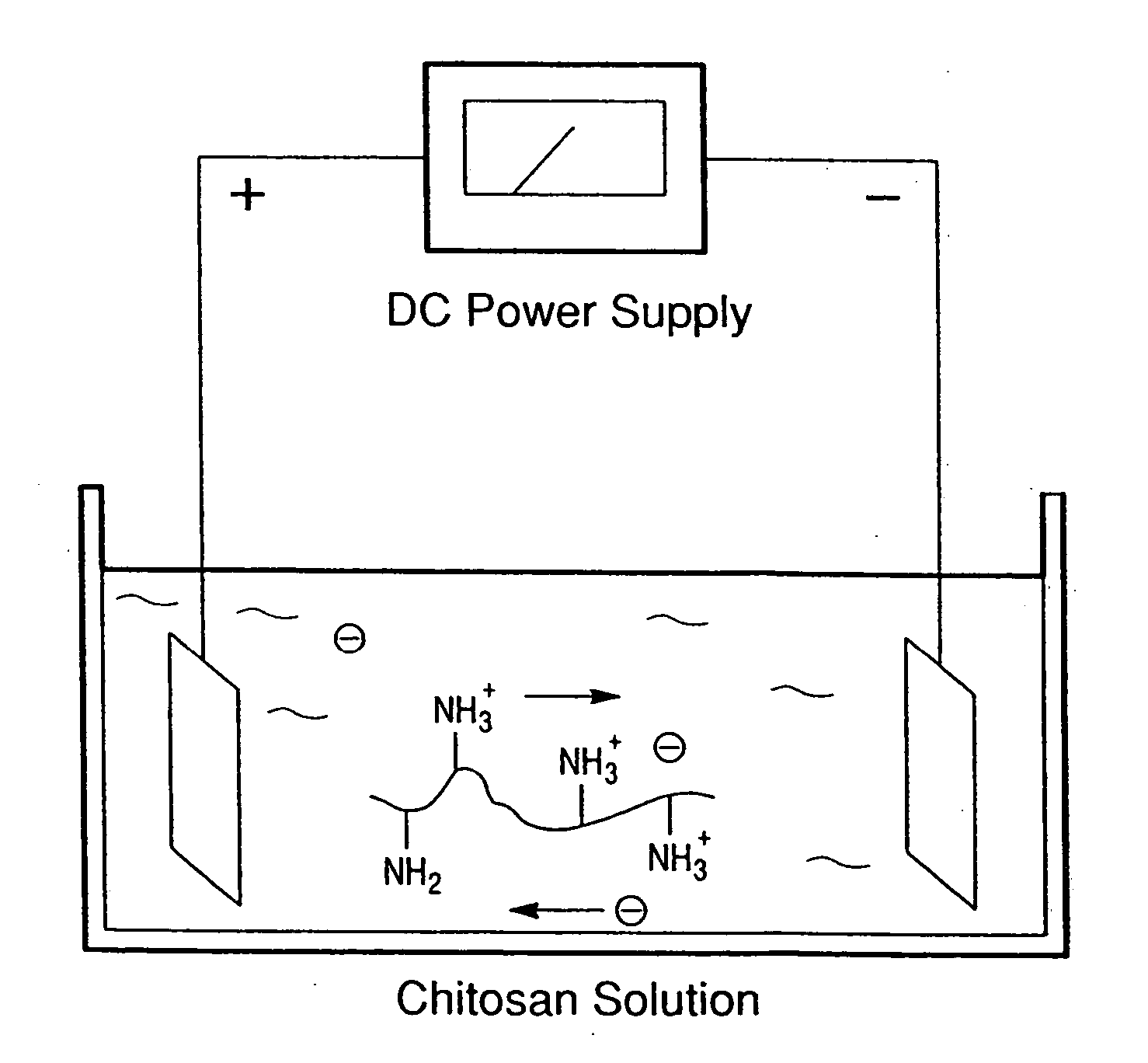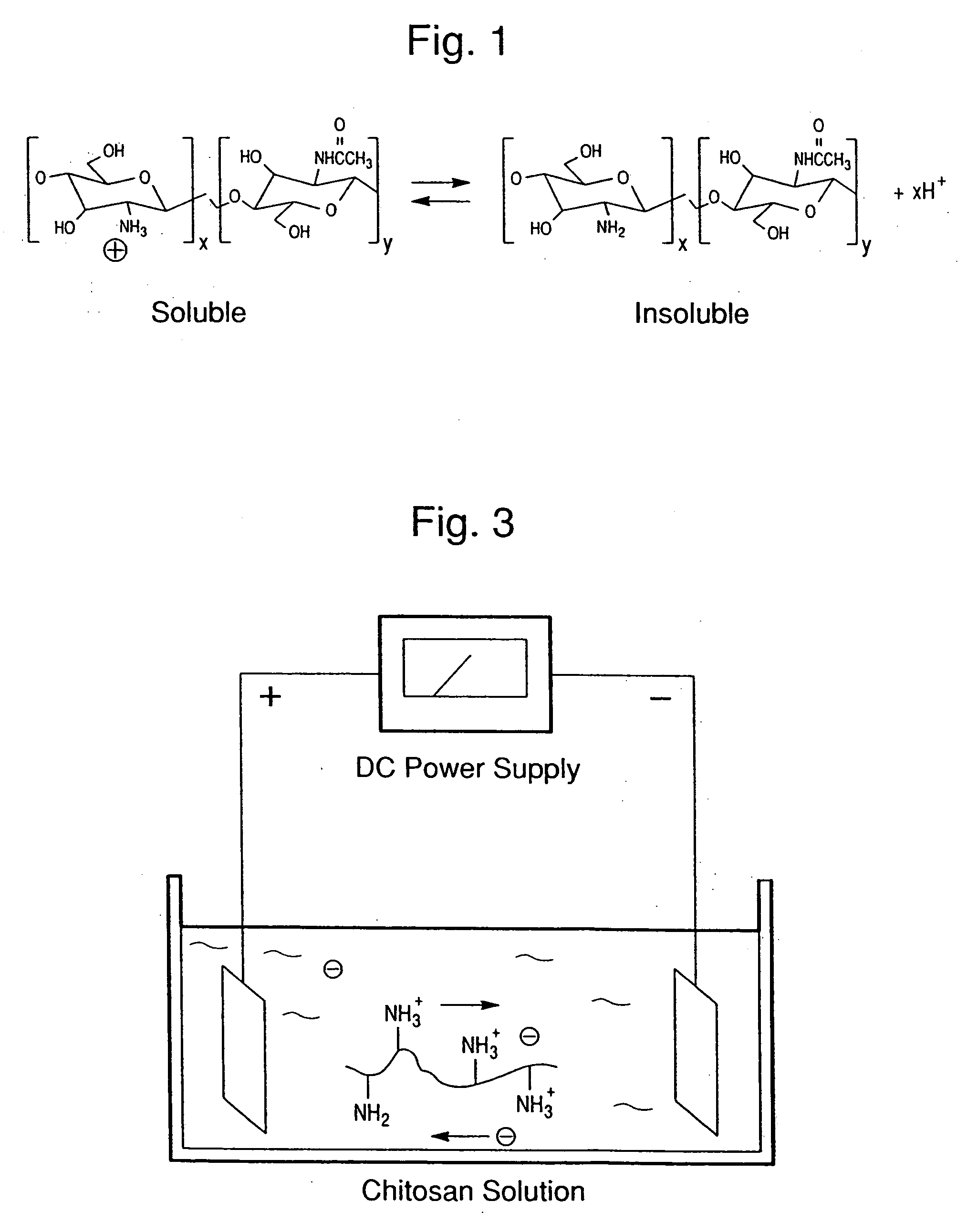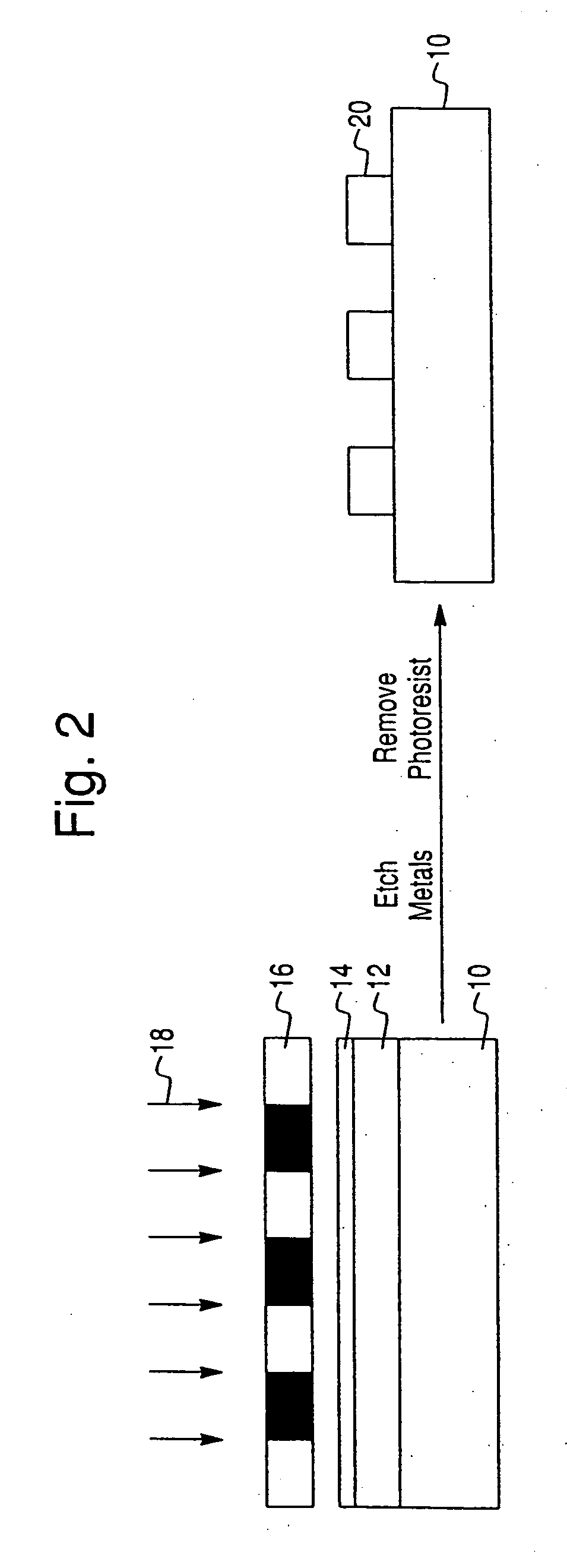Spatially selective deposition of polysaccharide layer onto patterned template
- Summary
- Abstract
- Description
- Claims
- Application Information
AI Technical Summary
Benefits of technology
Problems solved by technology
Method used
Image
Examples
example 1
[0072] The first example examined the selective deposition of fluorescently labeled chitosan onto a patterned surface. For this example, a silicon wafer was patterned to have two independent sets of gold surfaces. The photomicrographs in the top row of FIG. 5 were obtained using an optical microscope and show the patterns of the two sets of gold surfaces, with the right upper and left upper photomicrographs showing the gold surface patterns before and after deposition, respectively. The bottom row of photomicrographs of FIG. 5 was taken with a fluorescence microscope before and after deposition. The photomicrograph on left of the bottom row of FIG. 5 shows that prior to deposition, no image could be obtained from this patterned surface when a fluorescence microscope was used.
[0073] For deposition, the wafer was immersed in a solution containing the labeled chitosan and a negative voltage was applied to the polarizable gold surfaces. After 2 min of deposition, the wafer was removed ...
example 2
[0075] In the second example, unlabeled chitosan was deposited onto a patterned surface and examined the spatial selectivity for subsequent coupling reactions. For this example, a wafer was patterned to have a variety of gold lines with different widths and different spaces between the lines. The following table lists the dimensions of the various lines and spaces and shows that the lines vary in width from 20 to 1000 μm.
TABLELine thickness (μm)20501005001000Space (μm)50050050010001000100100200500500205010020030010305050100510101050
[0076] For deposition, this patterned wafer was immersed in a chitosan solution and the gold surface was polarized to be negative for 2 min. After deposition, the wafer was neutralized, rinsed, and dried as described above. Photomicrographs of the region of the wafer patterned with 1 mm wide gold lines spaced 1 mm apart were taken. The optical microscope showed both the lines and spaces in this region. No fluorescence was observed (through the fluoresce...
example 3
[0080] Chitosan from crab shells (15% deacetylation and a molecular weight of 200,000 as reported by the supplier) and glass slides coated with indium tin oxide (ITO) were purchased from Sigma-Aldrich Chemicals. Fluorescently labeled latex nanoparticles (FluoSpheres, 100 nm, excitation maximum 540nm and emission maximum 560 nm) and 5- (and 6-) carboxyfluorescein succinimidyl ester (NHS-fluorescein, excitation maximum 495 nm and emission maximum 519 nm) were purchased from Molecular Probes.
[0081] A chitosan solution was prepared by adding chitosan flakes to water and incrementally adding small amounts of HCl to the solution to maintain the pH near 3. After filtering undissolved material, the pH of the chitosan solution was adjusted to 5.0 using NaOH(1 M). Fluorescently labeled chitosan was prepared by reacting chitosan with NHS-fluorescein. Gold patterned silicon wafers were prepared using standard photolithographic methods. See, e.g., Wu, et al., Langmuir 2002, 18, 8620-8625; Wu et...
PUM
| Property | Measurement | Unit |
|---|---|---|
| Thickness | aaaaa | aaaaa |
| Thickness | aaaaa | aaaaa |
| Thickness | aaaaa | aaaaa |
Abstract
Description
Claims
Application Information
 Login to View More
Login to View More - R&D
- Intellectual Property
- Life Sciences
- Materials
- Tech Scout
- Unparalleled Data Quality
- Higher Quality Content
- 60% Fewer Hallucinations
Browse by: Latest US Patents, China's latest patents, Technical Efficacy Thesaurus, Application Domain, Technology Topic, Popular Technical Reports.
© 2025 PatSnap. All rights reserved.Legal|Privacy policy|Modern Slavery Act Transparency Statement|Sitemap|About US| Contact US: help@patsnap.com



